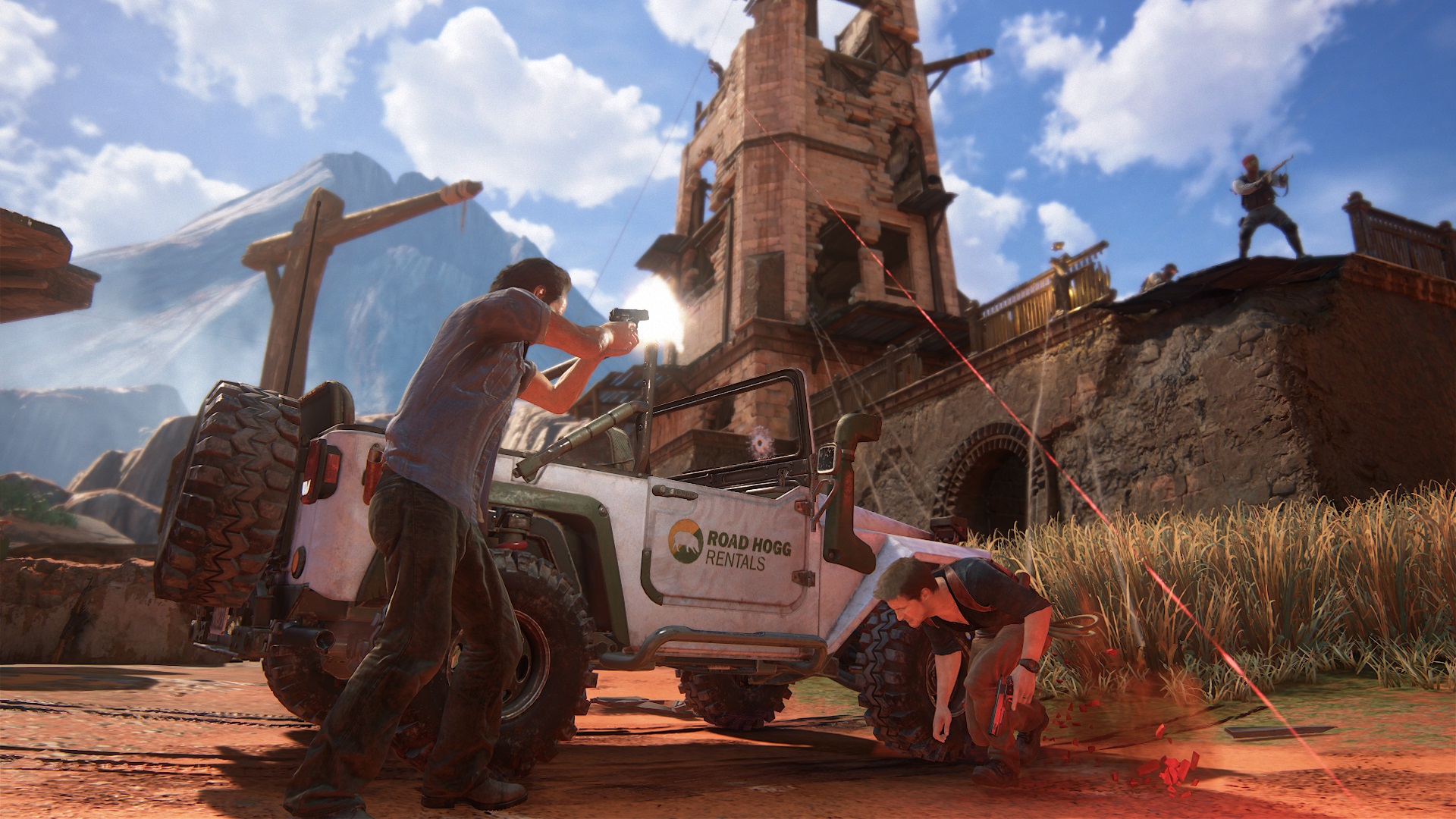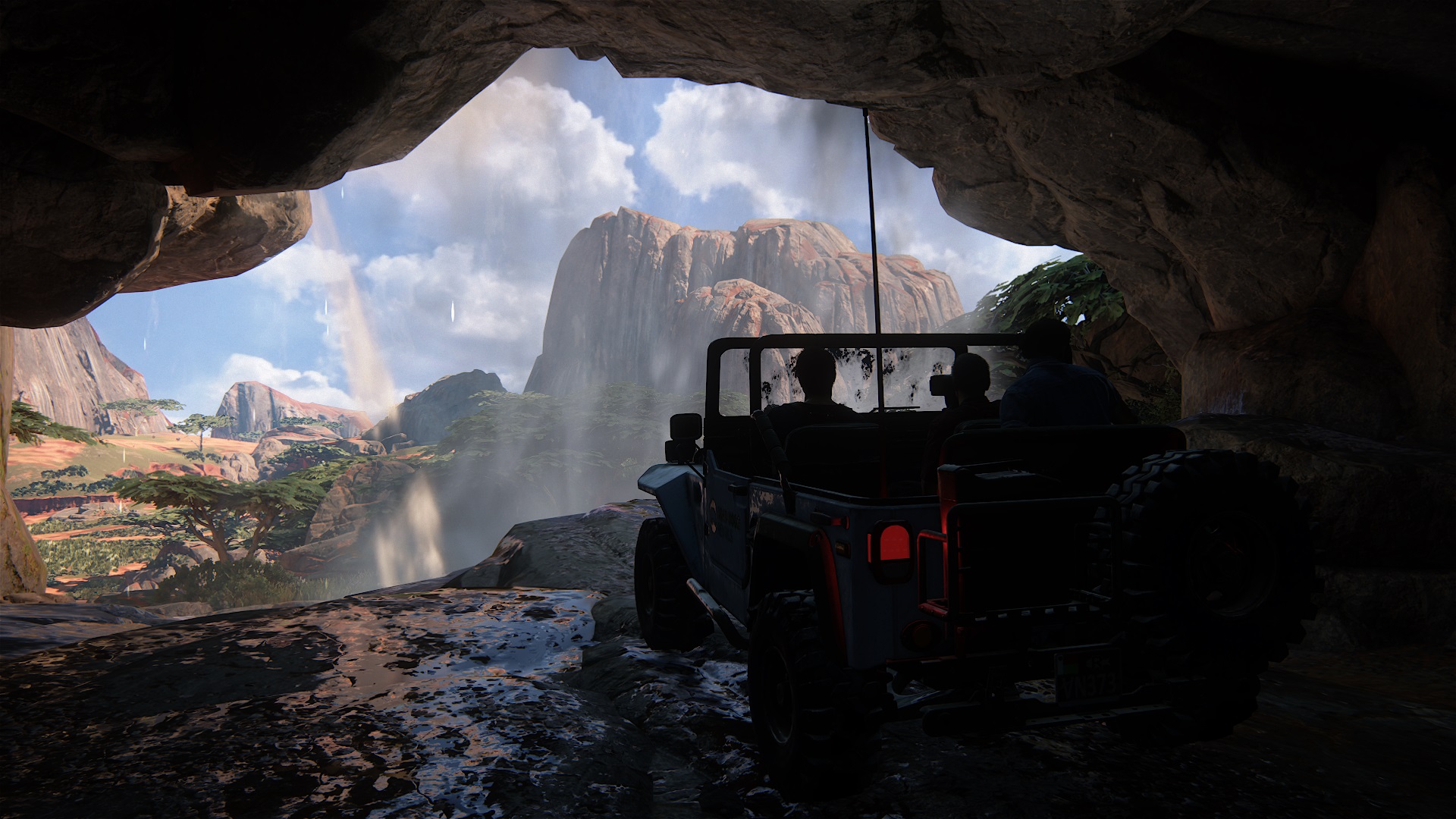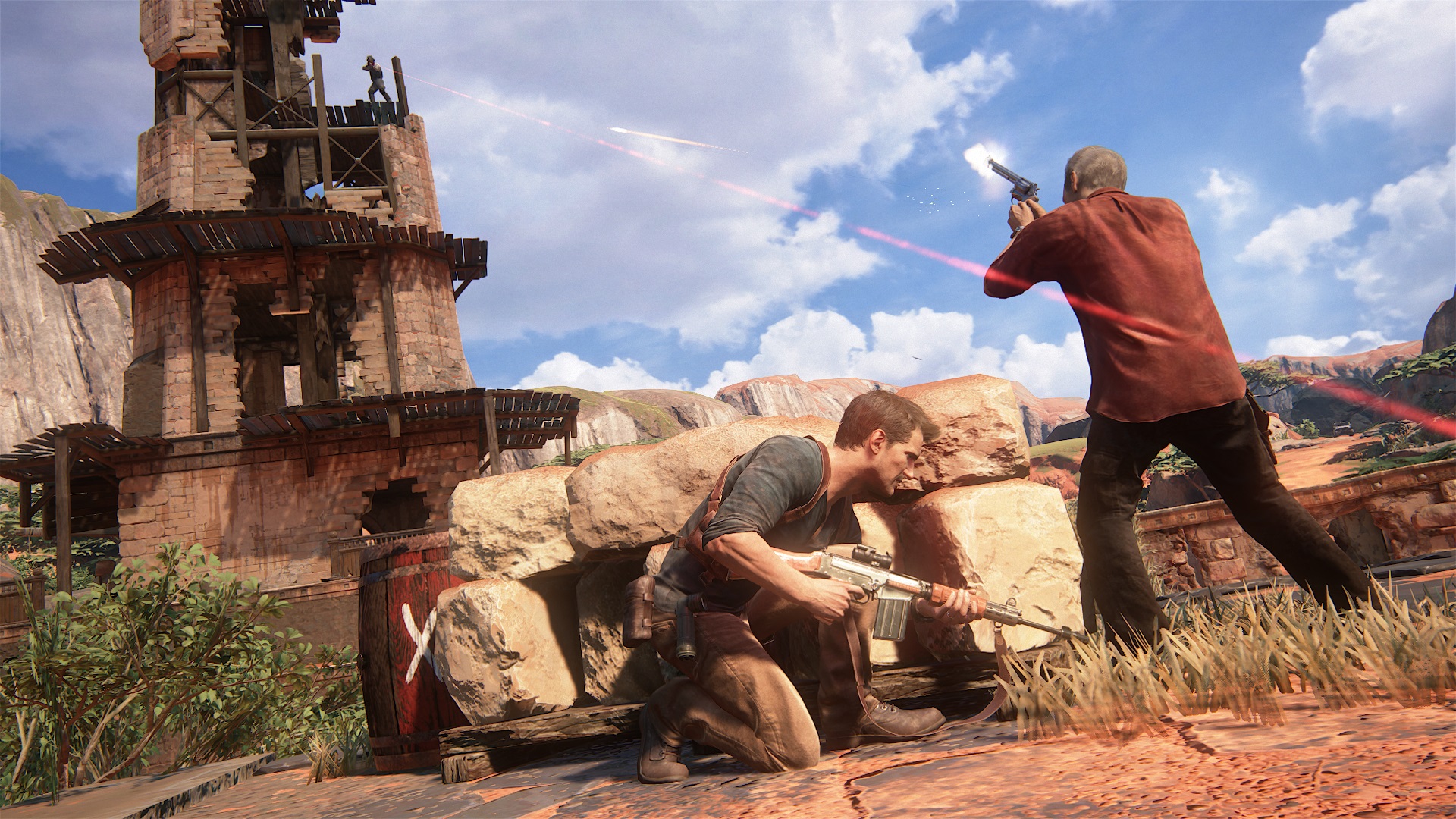Uncharted 4's Free-Roam Driving Is a Blast
Uncharted 4 adds free-roaming vehicles as yet another way to explore the game's intriguing world, and so far, it seems like a good addition.
NEW YORK — Nathan Drake has survived gunfights in the South American rainforest, ancient traps in the mountains of Nepal and scorching conditions in the Rub' al Khali desert. But in Uncharted 4: A Thief's End (out May 10 exclusively on PS4), he'll face a brand-new challenge: driving a car. The latest entry in Sony's flagship action/adventure series adds free-roaming vehicles as yet another way to explore Nate's dangerous and intriguing world, and so far, it seems like a good addition.

I had a chance to go hands-on with Uncharted 4 at a Sony press event, and learned a few interesting things about the game. First and foremost, Sony intends for it to be the last entry in the series. After the events of Golden Abyss, Drake's Fortune, Among Thieves and Drake's Deception, A Thief's End will wrap up Nathan's story once and for all, rather than letting it drag on indefinitely.
MORE: Best PS4 Games
At least players will get what appears to be a huge installment as a send-off. Compared to the last four Uncharted games, the best word to describe A Thief's End would be "open." Whereas the other games generally had linear areas (some of which were large, to be fair), Uncharted 4 puts Nate in the driver's seat of a 4x4 and gives players plenty of Madagascarian terrain to explore.
Without giving away too much of the story, I found myself on the trail of a gentleman pirate named Henry Avery, who hid the equivalent of $400 million in treasure before his death in the late 17th century. Avery set up a series of towers in a remote corner of the island-nation, and the treasure, in theory, was underneath one of them. (Naturally, since this is an Uncharted game, it almost certainly won't be quite so simple in practice.)

The area opened up right away, letting me drive the 4x4 over dirt, through mud and even in running water. There was plenty to find as well, from hidden treasures in out-of-the-way locations, to bits of story ephemera in optional ruins. These detours took only a few minutes apiece, but the rewards felt suitable for the effort expended. Conversations can also take an interesting turn, depending on where you drive: At one point, I found myself behind a waterfall, and my two passengers complained about getting wet before admiring the view.
When I found one of the towers occupied by South African mercenaries, I got a chance to try out the combat as well. Nate's gunfights have not changed considerably since the first game. You'll tackle enemies who can take a surprising amount of bullets in largely vertical environments, picking up their weapons as you gradually run low on ammo. Taking advantage of cover in the environment is key, as is continually moving, since your foes never stay still. Uncharted's combat is like slipping into an old sweatshirt: not the most exciting part of your wardrobe, but reliably comfortable.

Stealth, on the other hand, has gotten a bit of an overhaul. Rather than simply sneaking up behind an enemy and hoping for the best, adversaries now have a colored bar above their heads, similar to Assassin's Creed. White indicates an enemy that's wary, but still unsure of your presence. Yellow is on high alert, whereas orange means you've been spotted. I found it was basically impossible to use stealth for long, but even taking out a few enemies unawares can tip a heated battle in your favor.
Unchated 4 will be out on May 10 for PlayStation 4, and cost $60. Tom's Guide will have a full review at that time, but so far, it's shaping up to be a satisfying final entry for longtime series fans.
Sign up to get the BEST of Tom's Guide direct to your inbox.
Get instant access to breaking news, the hottest reviews, great deals and helpful tips.
Marshall Honorof is a senior editor for Tom's Guide, overseeing the site's coverage of gaming hardware and software. He comes from a science writing background, having studied paleomammalogy, biological anthropology, and the history of science and technology. After hours, you can find him practicing taekwondo or doing deep dives on classic sci-fi.

